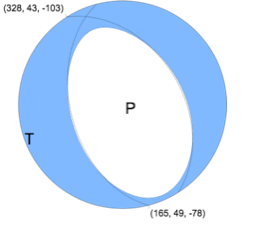The M6.2 Accumoli earthquake, central Italy
A magnitude 6.2 (Mw) earthquake struck Central Italy, approximately 45 km North of the town of L’Aquila where a destructive magnitude 6.3 earthquake occurred in April 2009. Picture1

The earthquake occurred at 10 km depth on a crustal fault in the Apennine region in central Italy. The relatively shallow depth of the earthquake has meant that this earthquake has been particularly destructive, killing at least 247 people.
The central Mediterranean is a complex and tectonically active region. As many of the earthquakes are in the crust, and the area is highly populated many of these earthquakes have a human impact.
Notably the L’Aquila earthquake in April 2009 which killed at least 308 people. The 2009 earthquake was preceded by several foreshocks and was linked with a high profile court case claiming that the authorities had failed to warn locals of the hazard.

The Norcia or Accumoli earthquake occurred on the 24th August 2016 is the result of a normal faulting structure in the central Apennines, however it was not proceeded by any noticeable foreshock earthquake swarm1.
1 http://temblor.net/earthquake-insights/gaps-persist-beyond-ends-m6-2-rieti-italy-earthquake-progressive-sequence-large-shocks-struck-1703-1216/
This region is tectonically and geologically complex, involving both subduction of the Adria micro-plate beneath the Apennines from east to west, continental collision between the Eurasia and Africa plates building the Alpine mountain belt further to the north and the opening of the Tyrrhenian basin to the west.
The Mediterranean region has active seismicity primarily because of the northward motion of the African plate, causing the closure of the Tethys Ocean, and subduction of the Tethys plate. The convergence rate varies from 4 to 10 mm/yr along the boundary. The Apennine mountains of Southern Italy have a high risk of earthquakes due to the Subduction of the Mediterranean Sea floor beneath the Tyrrhenian Sea . There are also some active volcanoes located there above intermediate depth earthquakes.
The dimensions and amount of slip caused by the earthquake source, can be inferred using seismic and geodetic observations. Italian researchers have estimated around 1 m of slip on a fault plane, for the Accumoli earthquake2. Figure 3 shows the surface displacements caused by the earthquake, as observed by the Japanese radar interferometric satellite ALOS-2. Each change in color represents 12 cm of displacement. Ground shaking correlates with the characteristics of the rupture. The rupture of shallow faults, like this Italian earthquake, produces strong shaking near the earthquake source. Picture2
2 Istituto Nazionale di Geofisica e Vulcanologia, blog post (in Italian): https://ingvterremoti.wordpress.com/2016/08/30/la-sequenza-sismica-in-italia-centrale-un-primo-quadro-interpretativo-dellingv/

More information on this earthquake at:
Liverpool Earth Observatory (Univ. Liverpool) teachable moments: https://www.liverpool.ac.uk/earth-ocean-and-ecological-sciences/research/earthquake-seismology-and-geodynamics/resources/
Citation
@misc{gonzalez2016,
author = {{Pablo J. Gonzalez}},
title = {The {M6.2} {Accumoli} Earthquake, Central {Italy}},
date = {2016-09-01},
langid = {en-GB}
}